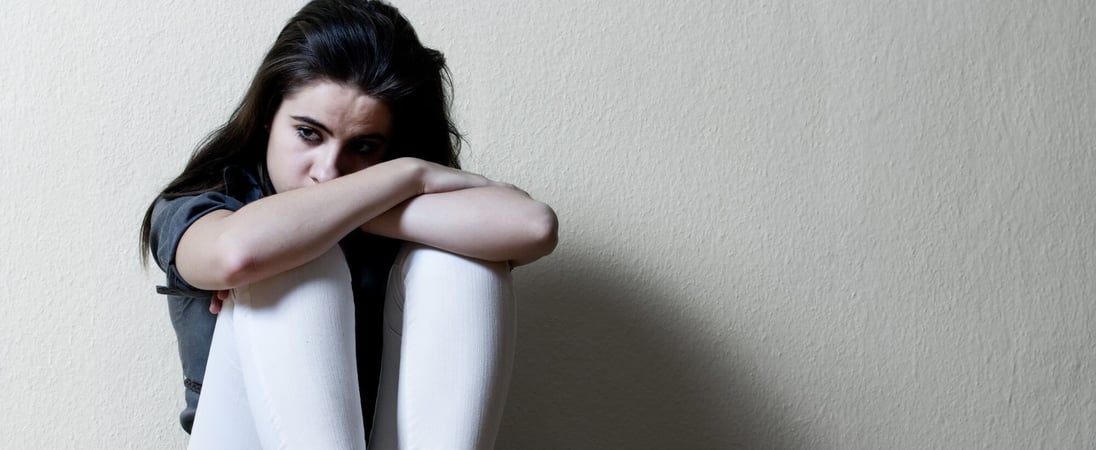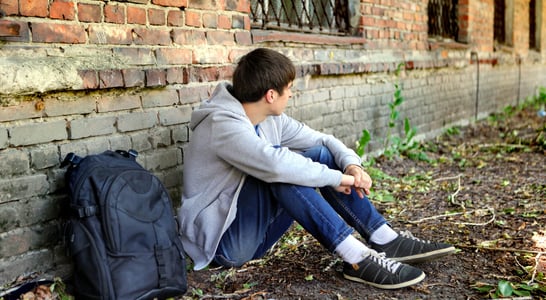
World Suicide Prevention Day
Learn about the warning signs for suicide and help spread awareness so that those who are struggling can get the help they need on World Suicide Prevention Day.
Every year on September 10th, we mark World Suicide Prevention Day. This day shines a spotlight on a critical issue, aiming to reduce the stigma around talking about suicide and to increase awareness about how we can prevent it.
It’s a day when organizations, governments, and people across the globe come together to send a clear message: actions can create hope, and it’s possible to prevent suicide.
The importance of World Suicide Prevention Day lies in its goal to save lives. More than 703,000 people die by suicide annually worldwide.
That’s about one person every 40 seconds. By dedicating a day to this cause, we aim to spark conversations that can lead to meaningful change. It encourages us to reach out, listen, and support struggling people. We can all play a part in reducing these numbers through awareness and action.
Celebrating this day is crucial because it reminds us of the power of hope and action. It shows that by coming together and speaking openly about mental health and suicide, we can break down barriers.
The day encourages understanding, compassion, and support, making it clear that suicide can be prevented with the right actions. It’s about creating a world where fewer people feel so alone that they consider suicide as their only option.
History of World Suicide Prevention Day
World Suicide Prevention Day began in 2003. It was an idea created together by the International Association for Suicide Prevention (IASP) and the World Health Organization (WHO).
Their main goal was to raise awareness about how suicide can be prevented. This special day happens every year on September 10th. It serves as a reminder that through action and understanding, we can help reduce suicides around the world.
This day was established to make people aware of the issue of suicide and encourage open talk about it. It’s a day dedicated to educating everyone that suicide is preventable.
By bringing attention to this issue, the founders hoped to reduce the number of suicides globally. Activities and events take place worldwide, aiming to spread hope and show that there are ways to help those in need.
The history of World Suicide Prevention Day is a testament to global cooperation in tackling a serious and sensitive issue. Over the years, it has grown to involve countries, communities, and individuals in a shared effort to offer support and understanding.
Each year, the day focuses on different themes to highlight various aspects of suicide prevention. It’s about creating an environment where people feel safe to speak about their struggles and seek help.
How to Celebrate World Suicide Prevention Day
Unleash Your Inner Advocate: How to Celebrate World Suicide Prevention Day
Be a Conversation Starter: Grab a cozy corner at your favorite coffee shop or pick up the phone. Chatting about mental health can be a game-changer. Discuss the big and small ways everyone can contribute to making a positive impact. It’s all about making mental health chats as normal as discussing the weather!
Digital Warrior: Transform your social media into a beacon of hope. Share stories, facts, and supportive messages using the hashtag #WSPD. It’s like throwing a digital lifeline out into the world. Who knows whose shore it might wash upon?
Workplace Wellness Whisperer: Why not turn your workplace into a sanctuary of support? Host a lunch-and-learn or a virtual meet-up focused on mental health. Remember, a little bit of understanding goes a long way in creating a supportive work environment.
Listen Like a Pro: Master the art of listening. It’s not just about hearing words; it’s about understanding the silence in between. When someone shares their struggles, show them that their feelings are valid and they’re not alone. Remember, being a good listener is like being a lighthouse in someone’s stormy sea.
Encourage the Journey: Nudge friends, family, or even strangers to seek help if they need it. Sometimes, it takes a gentle push for someone to see the light at the end of their tunnel. And remember, it’s okay to seek help, whether chatting with a counselor or exploring therapies.
Celebrating World Suicide Prevention Day isn’t just about marking a date on the calendar. It’s about sparking a movement, changing perspectives, and sprinkling a little bit of hope everywhere.
So, go on, wear your superhero cape for the day, and remember, every action, no matter how small, is a step towards a brighter tomorrow.
World Suicide Prevention Day FAQs
How has World Suicide Prevention Day changed the global conversation about mental health?
Before 2003, discussions about suicide were often avoided due to stigma.
Since its establishment by the International Association for Suicide Prevention (IASP) and World Health Organization (WHO), the day has sparked open dialogues in communities worldwide.
Many countries have launched suicide prevention strategies, improving mental health services and reducing stigma.
It has also inspired media guidelines that promote responsible reporting, leading to a decrease in harmful narratives. The global conversation has shifted from silence to action, showing that awareness saves lives.
What surprising cultural traditions promote hope and resilience in preventing suicide?
Many cultures have unique ways of supporting those struggling. In Japan, “Listening Cafés” provide a space where people can talk without fear of judgment.
In New Zealand, Māori communities practice whānau-centered healing, ensuring that no one is left alone in their struggles. Norway integrates mental wellness education into its school system, encouraging young people to seek help early.
These traditions emphasize that prevention isn’t just about crisis intervention—it’s about building strong, supportive communities that foster hope before people reach a breaking point.
What are the most harmful myths about suicide, and how do we replace them with truth?
One of the most damaging myths is that talking about suicide encourages it. Research shows the opposite—open, compassionate conversations save lives.
Another misconception is that suicidal thoughts mean someone has given up. In reality, many people experiencing these thoughts don’t want to die; they want relief from pain.
Finally, some believe suicide only affects those with mental illness, but financial hardship, grief, and loneliness can also contribute. Understanding these truths leads to better support and prevention efforts.
How have past efforts proven that suicide prevention works?
Many countries have successfully reduced suicide rates with targeted action.
Finland implemented national mental health strategies in the 1980s and reduced its suicide rate by 30% over two decades. Scotland’s “Choose Life” program improved crisis intervention, leading to a steady decline in deaths.
In Sri Lanka, restricting toxic pesticides significantly lowered suicide rates. These efforts prove that policy changes, community support, and education can make a real difference.
What does the suicide prevention ribbon symbolize, and why is it powerful?
The two-toned yellow and orange ribbon represents the flickering flame of a candle—symbolizing hope, remembrance, and solidarity.
It connects to the global tradition of lighting candles on September 10th to honor lives lost and remind struggling individuals they are not alone.
Over time, the ribbon has become a universal emblem of support, inspiring everything from educational programs to community-driven mental health initiatives.
What groundbreaking innovations are changing suicide prevention today?
New technologies are revolutionizing mental health care. AI-driven chatbots like Woebot and Wysa offer real-time emotional support. Text crisis lines have improved accessibility for those unable to speak about their struggles.
In the U.S., the 988 Suicide & Crisis Lifeline provides quick emergency help.
Studies also show that music therapy, equine therapy, and virtual reality are effective in reducing distress. These innovations prove that hope is not just a feeling—it’s something we can actively create.
What past themes of World Suicide Prevention Day have left a lasting impact?
The themes often encourage hope and action. In 2016, “Connect, Communicate, Care” emphasized the role of compassionate relationships in preventing suicide.
In 2021, “Creating Hope Through Action” inspired people to take tangible steps in their communities.
These themes highlight that one small action—checking in on a friend, sharing a resource, or advocating for better policies—can save lives.
How is social media being used for suicide prevention in positive ways?
While social media can have negative effects, it also serves as a lifeline for many.
Platforms like Twitter and TikTok have introduced “suicide prevention alerts”, connecting users to mental health resources. Campaigns like #StayHere and #SeizeTheAwkward encourage people to check in on friends.
In some cases, AI even detects distress signals in posts and connects users with support. The internet, when used wisely, can be a powerful tool for hope.
How can governments build stronger suicide prevention policies?
Countries with the lowest suicide rates have policies that emphasize mental health education, crisis support, and economic security. Australia offers universal mental health care.
Norway has integrated suicide prevention training into schools and workplaces.
Even small-scale actions, like installing barriers on bridges and train platforms, have proven effective.
By prioritizing well-being in legislation, governments show that suicide prevention is not just about crisis response—it’s about building a society where people feel valued and supported.
How can individuals help prevent suicide, even in small ways?
Many think they need professional training to help, but small actions save lives.
Listening without judgment, encouraging someone to seek help, and sharing mental health resources can make a huge difference.
Checking in on friends who seem withdrawn, leaving a supportive note, or simply saying “I’m here for you” can break the cycle of isolation. The most powerful message we can send is: “You are not alone.”
See what else is happening…
There’s always more going on every month at Days Of The Year. Here are our favorites this month!
Also on ...
View all holidaysNational Swap Ideas Day
Don’t keep your ideas to yourself. Get together with friends or family and swap ideas on anything and everything, and see what small and big changes you can make.
National TV Dinner Day
Take a break from the chopping and dicing and baking and frying and sweating in the kitchen, and just enjoy a pre-made TV dinner, fresh and hot from the microwave.
National Quiet Day
Amid the bustling world, finding solace in the absence of noise, where thoughts unwind, and tranquility whispers its soothing secrets.
We think you may also like...
College Student Grief Awareness Day
With 1 in 3 college students grieving the loss of a loved one, it’s important to acknowledge and aid those who might be struggling invisibly on college campuses.
R U OK?Day
Extending genuine care, ensuring well-being, and fostering connections through thoughtful moments of empathy and support.
Loneliness Awareness Week
Exploring the impact of social isolation reveals profound insights into mental health, well-being, and community connections.








